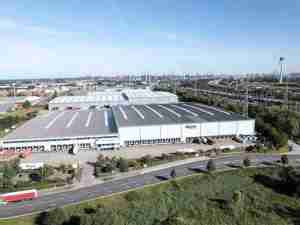The difference is evident in the air, as well as at port terminals and nearby freeways. Most of the aging big-rigs are already gone, replaced by 5,600 newer, safer and cleaner models thanks to the Port of Long Beach’s Clean Trucks Program. An additional 2,400 new trucks are on order and will soon be put into service. Many are very conspicuous, with their shiny white cabs.
The program successfully began phasing out old trucks on Oct. 1, 2008. By January, nearly 90 percent of all trucks calling at the Port of Long Beach will meet tough 2007 federal emission standards.
“Little more than a year ago, the ports looked like a graveyard where old dirty trucks came to die,” said Nick Sramek, President of the Long Beach Board of Harbor Commissioners. “This New Year’s Day, we’ll celebrate a Port of Long Beach Clean Trucks Program that has accomplished a great deal in an extremely short time, bringing us the newest clean truck technology and an impressive clean air benefit for the community.
“By January 1, the Program will have achieved nearly an 80 percent reduction in trucking air pollution -- two years ahead of schedule.”
Phasing out older vehicles produces major clean-air benefits because the U.S. Environmental Protection Agency is requiring manufacturers to build cleaner engines.
Key Clean Trucks Program dates:
* On October 1, 2008, the Port barred 1988 and older truck engines.
* On January 1, 2010, the Port will ban 1993 and older truck engines, along with unretrofitted 1994-to-2003 truck engines.
* On January 1, 2012, only 2007 and newer truck engines will be allowed to enter marine terminals.
The Port electronically controls truck access to marine terminals with a system based on radio frequency identification (RFID) tags. Licensed motor carriers must register their trucks online with the Port. The trucks must be equipped with RFID tags. Only trucks meeting Port environmental, safety and security standards get a green light to enter shipping terminals. Red-lighted trucks are turned away.
A small number of trucks that do not meet the January 1, 2010, standard will have an extra four months to work at the Port – but only if the owner is awaiting a new truck through a Port or state financing program.
While some truck owners have obtained or are obtaining new trucks via grant programs, most of the industry’s new trucks have been purchased or leased without public financial assistance. So, the truck owners and their customers, the importers and exporters, are paying for the new trucks and the clean air improvements.









